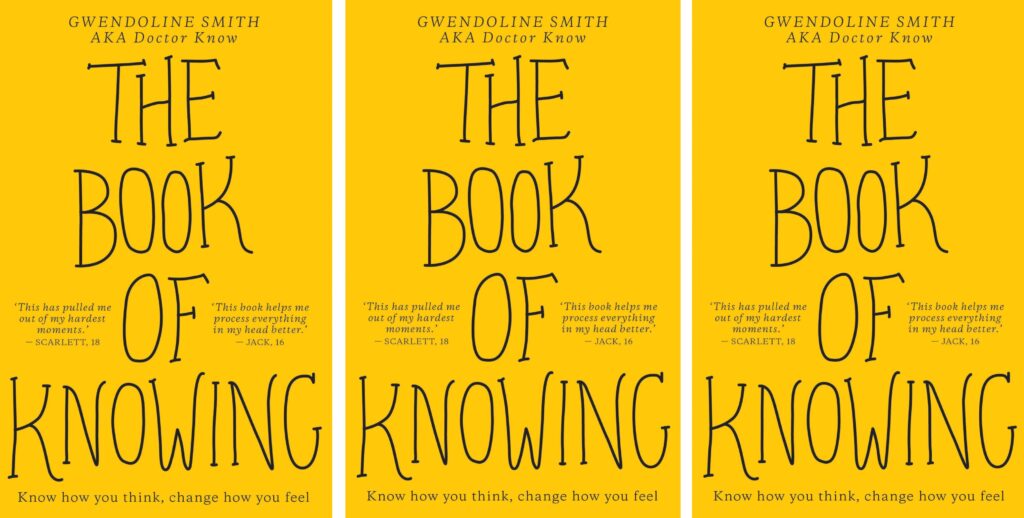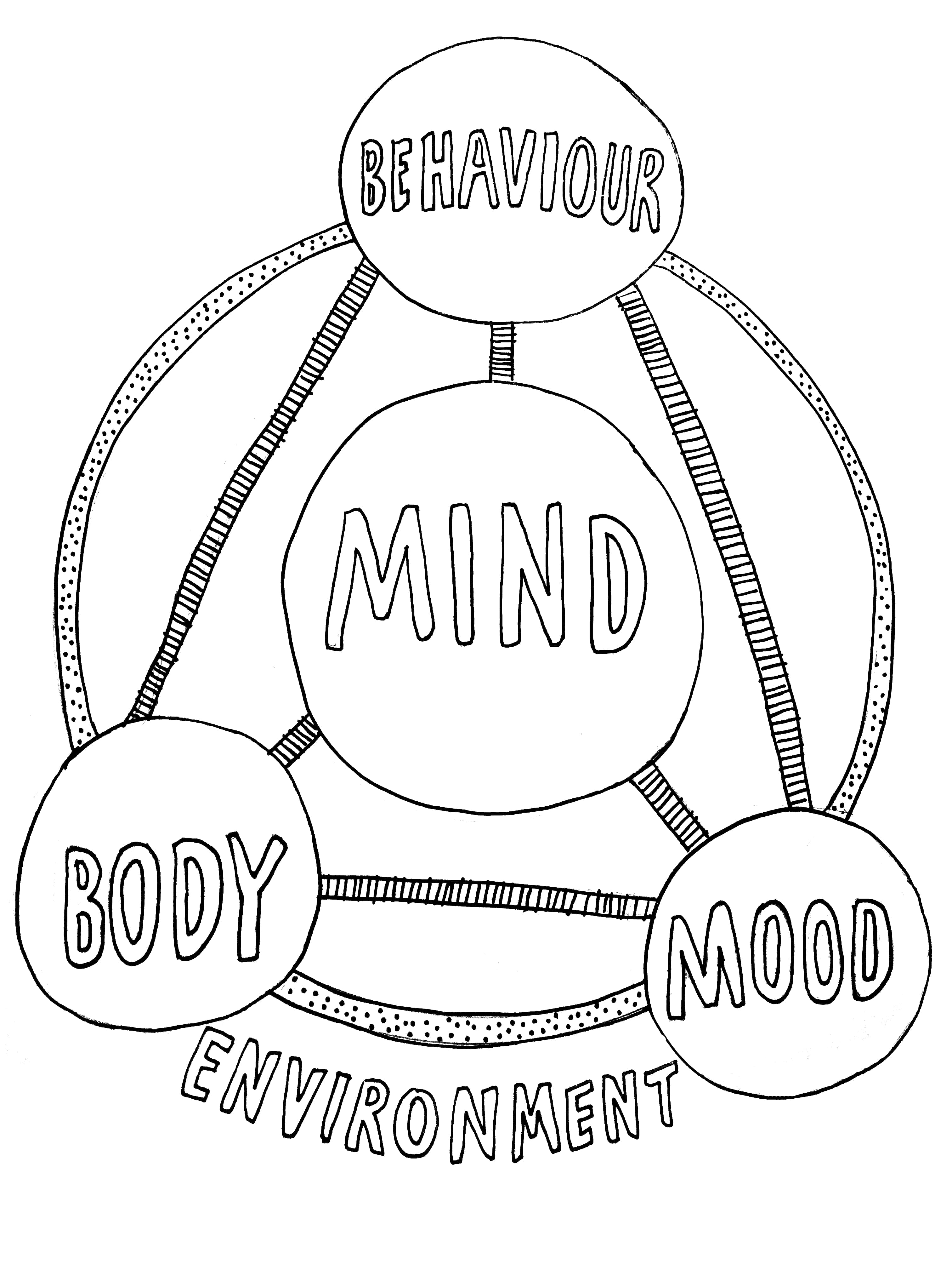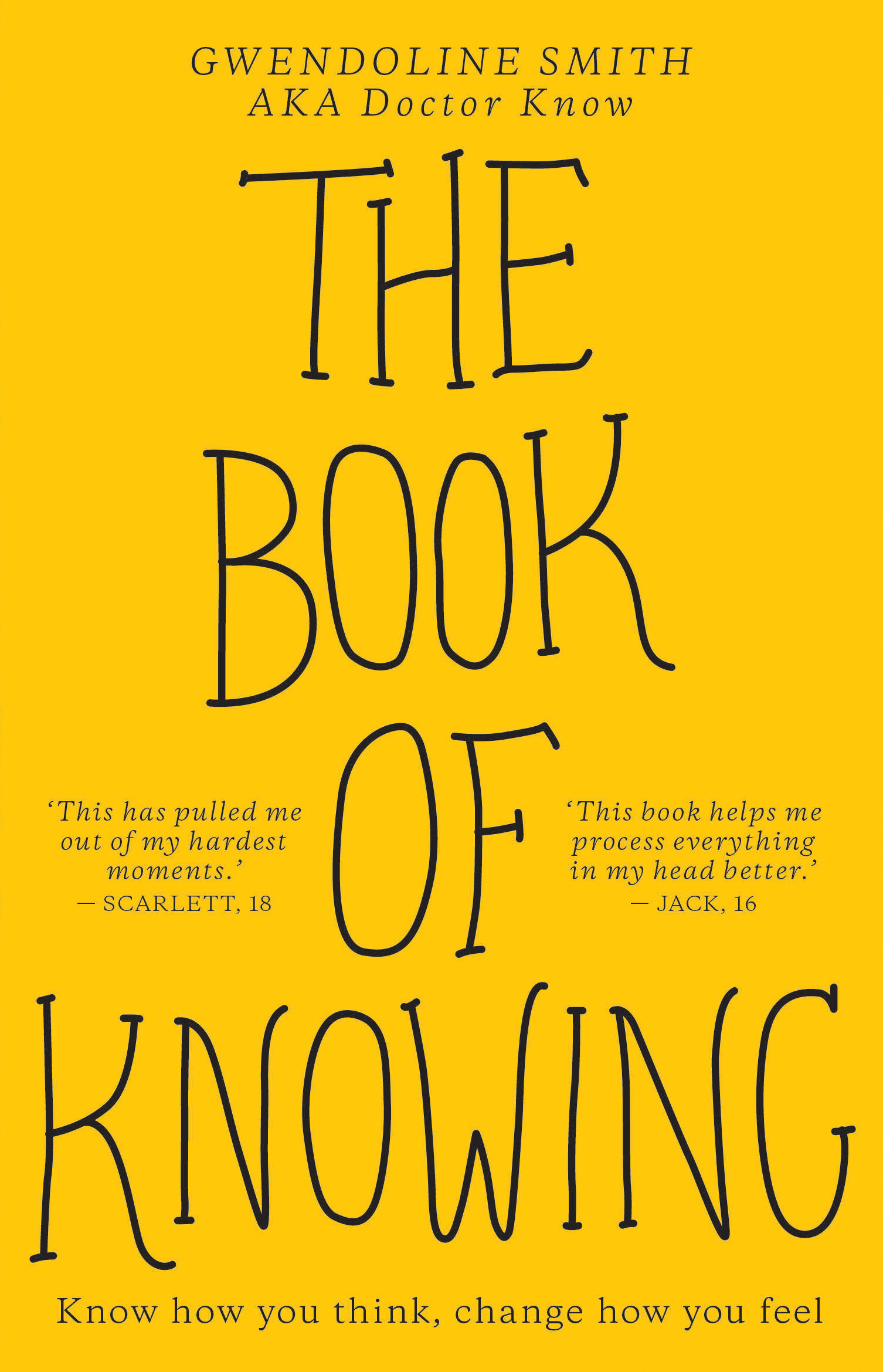In this new book, psychologist Gwendoline Smith (AKA Doctor Know) teaches teens about what’s going on in their minds and how to get their feelings under control. Last week, we published an extract: this week, we have a review of this very helpful book by school counsellor and teacher, Louisa Woods.

The Book of Knowing is clinical psychologist Gwendoline Smith’s first book for adolescents. Following an enormous response to her blog, Ask Dr. Know, which focusses on supporting young people as they negotiate their way through life’s challenges, Smith recognised an unmet need—clear, practical, evidence-based advice for adolescents on managing uncomfortable emotions. The Book of Knowing addresses that need, promising readers ‘When you understand how you think, you get to change how you feel’.
Based in cognitive behavioural therapy (CBT), The Book of Knowing explores the idea that our thinking is the key to managing our feelings, and the element of ourselves and lives over which we have the most control. Smith breaks down some complex CBT concepts into manageable chunks, and distils the information further to create memorable summary statements: ‘You cannot change the reality, it just is’; ‘Feelings are not facts’; ‘Choose the thoughts that help you adapt’.
Smith uses a conversational tone, and language which is accessible and relatable. At times this does feel a little unnatural—as if an editor has advised dropping in some swearing and slang to connect with ‘today’s youth’—but the overall effect is to convey important information in a way that doesn’t feel like a lesson at school or a lecture across the dinner-table. The content may be new and challenging for many, but the style allows readers to easily engage with the text.

The drawings scattered throughout are another point of connection, providing visual summaries in the form of flow charts and diagrams, or using humour to illustrate important points in the text. Sure, some of the humour runs perilously close to dad-joke status, but who doesn’t love one of those? Even the coolest amongst us likes a dad-joke; at the very least they provide an opportunity to roll our eyes and take a break from thinking about anything too serious.
As a school counsellor, three chapters stand out to me as particularly useful for adolescents in guiding reflection on thinking patterns and consequently managing feelings. The first examines cognitive distortions—unhelpful ways of thinking Smith refers to as thought viruses. She describes twelve, and does so in a non-judgemental, often humorous way, allowing readers to recognise the viruses as common and ‘normal’ as well as irrational and unhelpful. Alongside descriptions of viruses such as All-or-Nothing Thinking, Catastrophising, and Personalisation, Smith has included tip boxes to help young people recognise infected thoughts. She explains earlier in the book that while it’s not a natural inclination to scrutinise our thoughts, by examining them, and testing whether they are rational and reasonable, we can start to treat any viruses at work in our system. Her tip boxes help readers begin this process.
Alongside descriptions of viruses such as All-or-Nothing Thinking, Catastrophising, and Personalisation, Smith has included tip boxes to help young peoplerecognise infected thoughts.
Additional tools for recognising and challenging thought viruses are included in chapters eight and nine. Thought journals are recommended as a key tool in identifying situations where thought viruses are in control and uncomfortable feelings develop accordingly. The journal process is described in great detail, and a worked example is included to provide a clear illustration of how a reader might use the technique effectively. Smith shares several other strategies, including flash cards and a ‘de-catastrophising scale’, all of which can be used on the spot if needed.
Just having a few tools to put in their kete can lessen a young person’s anxiety; knowing they have something on hand should they need it is reassuring. By carefully selecting a few robust, effective strategies to share, explaining the rationale for using them, and giving clear instructions on their use, Smith makes it more likely readers will give the tools a go. Young people like to know ‘why’, and Smith makes sure they do, not only with the tools she shares, but as she explains key CBT concepts throughout the book.
Just having a few tools to put in their kete can lessen a young person’s anxiety; knowing they have something on handshould they need it is reassuring.
Smith has thought about how best to convey her message, however, the books’ simplicity is also where its problems lie. The examination of thought viruses and suggested strategies for tackling them are certainly relevant to all readers, but the examples of troubling situations used in these sections are stereotyped, and to those young people living through serious hardship or with mental health diagnoses, could seem almost trivial. Many teens have a lot more going on than worries about the number of xs their boyfriend included in his last text. Any issue that causes a person distress is certainly worth addressing and including, but for those whose lives include more complex circumstances, the lack of relevant examples could make them feel isolated, weird, and beyond help.
Many young people can find themselves in this book. But will those dealing with the aftermath of sexual assault, for example, be able to find themselves here? As Smith states, ‘reality and perception are two different things’. While the reality is, the knowledge and strategies gained through reading The Book of Knowing could benefit all of us, even those of us working through the most challenging of circumstances, the perception of young people who do not recognise their situations or the depth of their problems in the book will affect their willingness and ability to engage with its methods and ideas.
It is with these young people in mind that my second concern with the book arises. The solutions presented are given in such a way as to seem simple—not a bad thing in and of itself, and no doubt done with the intention to reassure, and encourage their use. However, CBT strategies can take time and practice to start to make an appreciable difference to cognitive distortions. This is particularly true for those dealing with long-standing, well-established thinking patterns, or particularly difficult experiences. Smith does acknowledge that using the strategies can take some effort, but not enough is made of this fact. The risk is twofold: teenagers give up on the tools because they don’t see rapid change and assume they’re not helping; and those who already feel like failures have that belief reinforced when something that seems so simple doesn’t work for them.
Smith does acknowledge that using the strategies can take some effort, but not enough is made of this fact.
Nonetheless, Gwendoline Smith has created a valuable resource in The Book of Knowing. The book has the potential to support young people in examining their thinking and giving them a sense of control over what often seems uncontrollable in adolescence, their thoughts and feelings.


Louisa Woods
Louisa Woods is a counsellor and former English teacher, currently living in Blenheim with her husband and three children. Much of her writing focuses on supporting, and communicating with children and adolescents and she takes great pleasure in being able to combine her love of books with her passion for working with our young people in writing for The Sapling. You can find her on Facebook.



